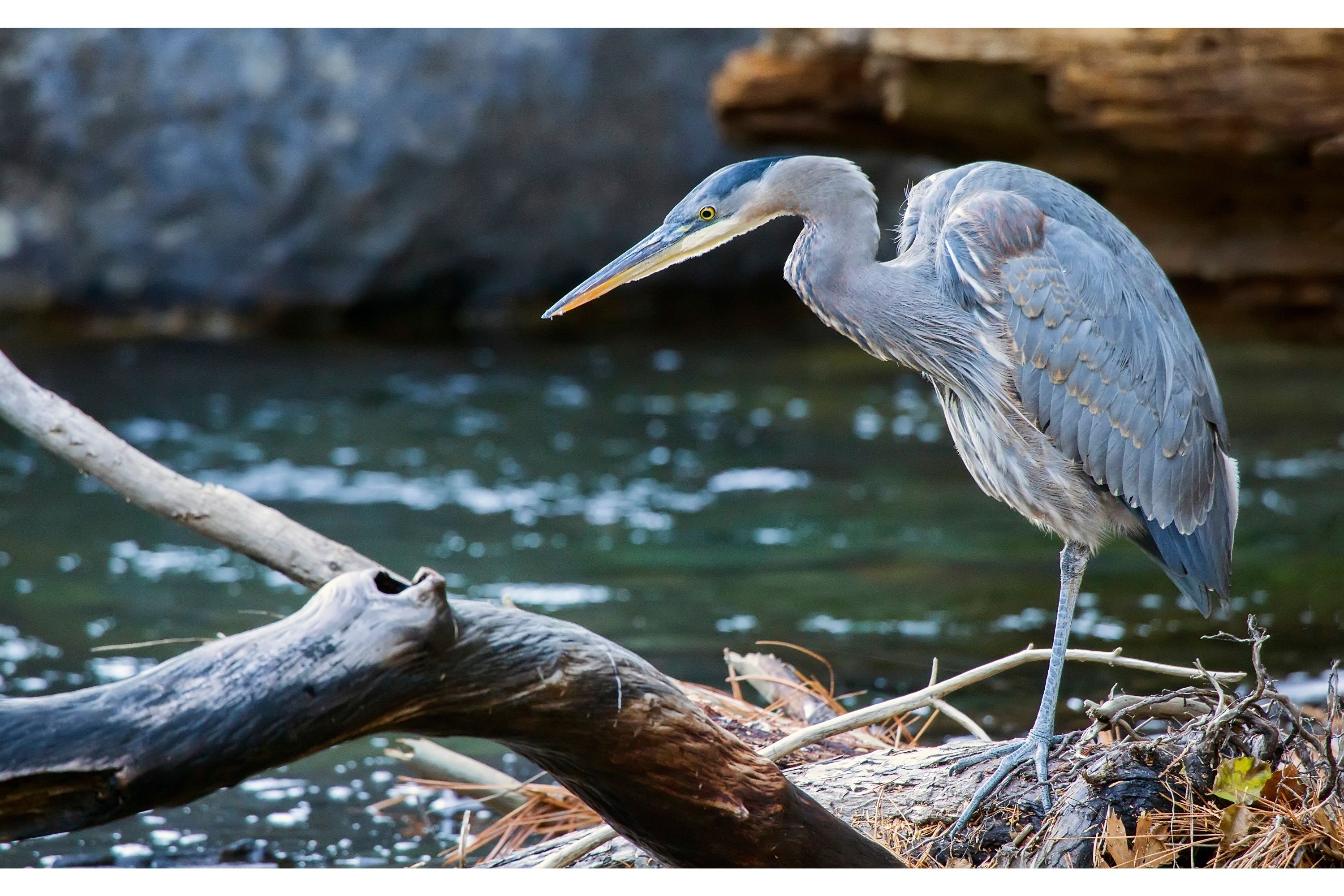Great blue heron
(Ardea herodias)

Description
Ardea herodias, commonly known as the Great Blue Heron, is a large wading bird found throughout North, Central, and South America. With its striking blue-gray plumage, long legs, and sharp bill, this majestic bird is a familiar sight in wetlands, marshes, and shallow water bodies. Taxonomy and Classification: The Great Blue Heron belongs to the family Ardeidae, which includes other wading birds such as egrets, bitterns, and herons. Its scientific name, Ardea herodias, was first described by Linnaeus in 1758. The species is divided into five subspecies, which vary in size and distribution. Physical Description: The Great Blue Heron is a large bird, measuring 91-137 cm in length and weighing 2-4 kg. Its wingspan can range from 1.8 to 2 meters. The plumage is blue-gray on the back and wings, with a white face, neck, and underparts. The bill is long, sharp, and yellow, and the legs are long and black. The eyes are yellow and the feathers on the head form a black crest. Juveniles have a more brownish plumage and lack the crest. Distribution and Habitat: Ardea herodias is found throughout North, Central, and South America, from Alaska and Canada to the southern tip of Chile and Argentina. It is a year-round resident in most of its range, but some northern populations migrate south during the winter. The species inhabits a wide range of wetland habitats, such as swamps, marshes, ponds, lakes, and rivers. It can also be found in coastal areas, estuaries, and mangrove forests. The Great Blue Heron prefers shallow water bodies with vegetation where it can hunt for fish, amphibians, reptiles, and small mammals. The species is adaptable and can also be found in urban and suburban areas, such as golf courses and parks, where there are suitable habitats for feeding and nesting. Behavior and Diet: The Great Blue Heron is a solitary bird, although it can sometimes be seen in small groups during the breeding season. It is a patient hunter, standing still for long periods of time and waiting for fish, amphibians, reptiles, and small mammals to come within reach. It can also hunt in shallow water by using its sharp bill to spear prey. The species is known for its distinctive feeding behavior, where it extends its neck and waits for the prey to come within striking distance. The Great Blue Heron also feeds on insects, crustaceans, and other invertebrates. Breeding: The breeding season of the Great Blue Heron varies depending on the region. In the southern parts of its range, it breeds during the winter months, while in the north it breeds in the spring and summer. The species nests in colonies, usually in trees near water bodies. The nests are large and made of sticks and twigs. Both males and females participate in building the nest and incubating the eggs. The female lays 2-6 eggs, which hatch after about 25-30 days. The young birds are fed regurgitated food by both parents and leave the nest after about two months. Conservation Status: The Great Blue Heron is listed as a species of Least Concern by the International Union for Conservation of Nature (IUCN). However, the species is affected by habitat loss, pollution, and human disturbance. Wetland degradation and development can lead to a decrease in suitable habitat for the species. Pollution can affect the quality of the water and the prey base, while human disturbance can cause the birds to abandon their nests or feeding grounds. Conclusion: Ardea herodias, the Great Blue Heron, is a remarkable bird that is well-adapted to its wetland habitat. With its striking blue-gray plumage and distinctive feeding behavior, the species is a familiar sight in North, Central, and South America.
Taxonomic tree:







